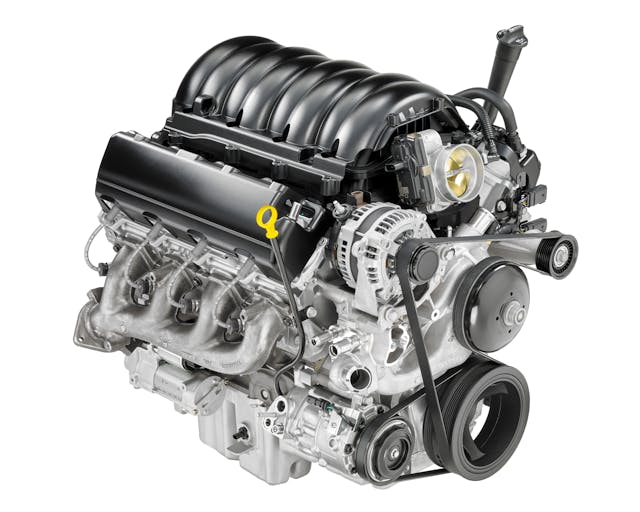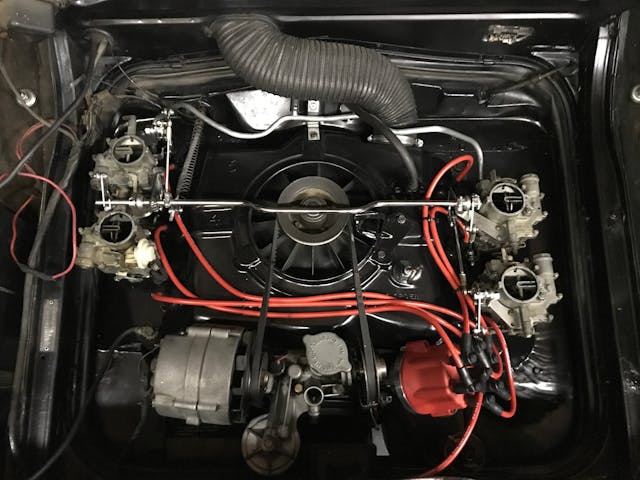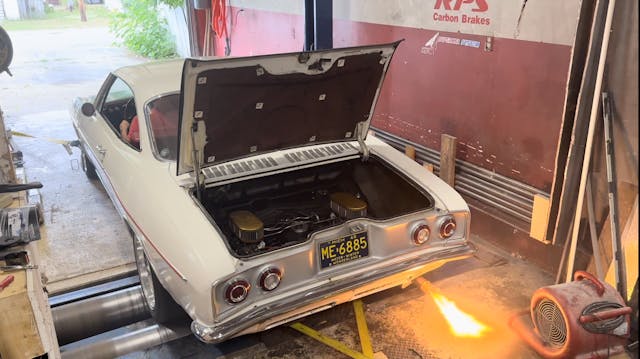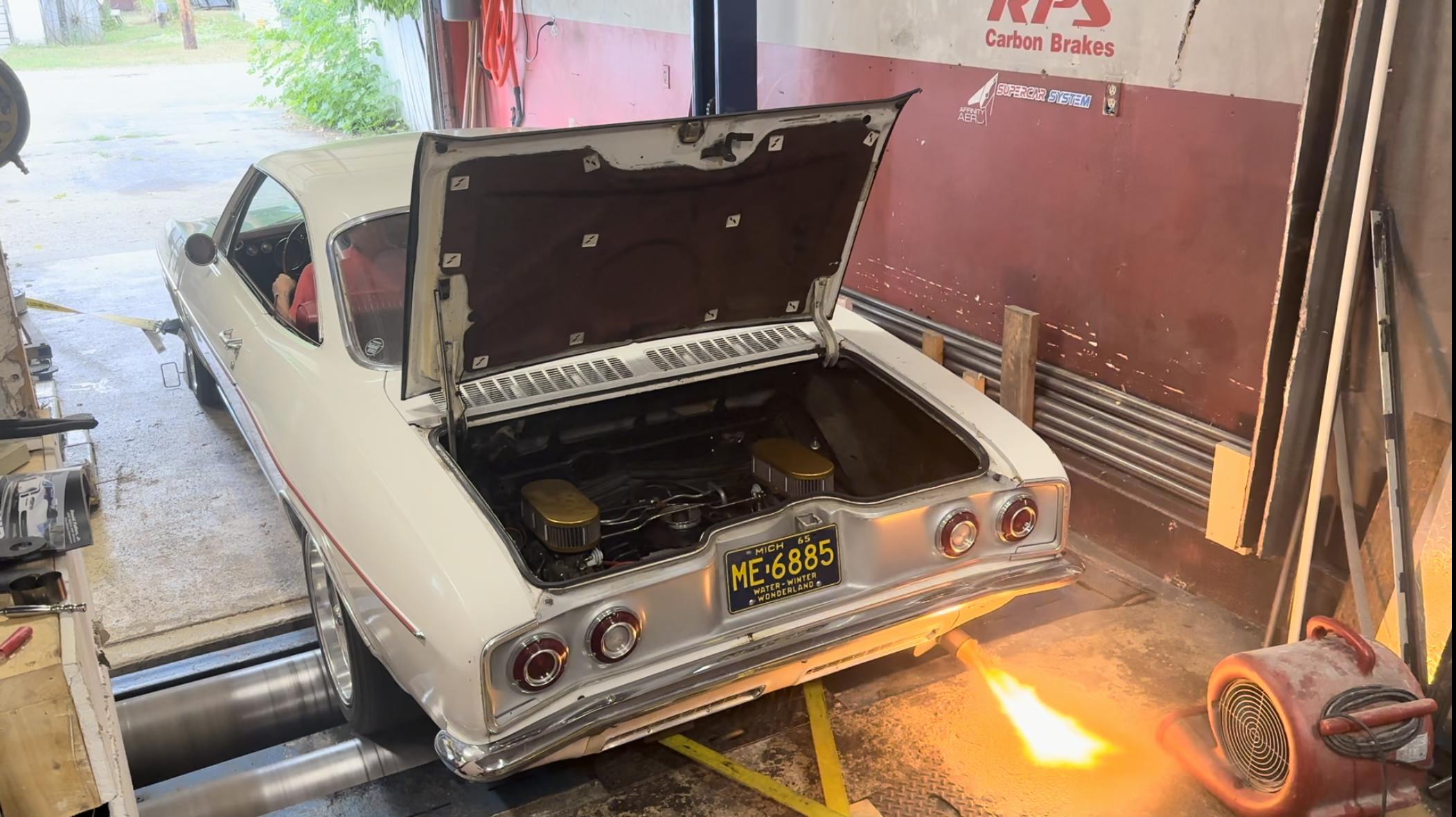Media | Articles
3 Ways Engines Can Make Big Power
At one point in history, thermal efficiency was just a kernel of thought brewing in a would-be engineer’s brain. This led to seeking power in the easiest possible way: Making engines with massive displacement. It made sense then, but times have changed and now there are other ways to make engines that produce usable and reliable power, without requiring 800 pounds of cast iron and pistons the size of coffee cans.

The hardest part of this conversation is that there will always be dyed-in-the-wool people who declare there is “no replacement for displacement.” We’ll get to why that may or may not be true, but first let’s talk about why this sentiment exists: The displacement of an engine is essentially the measurement of how much air volume the engine can pump through itself. The easiest way to calculate this is to plug into a formula the engine’s measurements: Bore squared x .7854 x stroke x number of cylinders = cubic inch displacement. Example: A Chevrolet small-block that measures 4″ bore by 3.48″ stroke by 8 cylinders equals 349.8 cubic inches. Most every manufacturer does a little rounding for the sake of cleanliness.
As compression and combustion of the air/fuel mixture is what makes power, the volume of air determines the power potential. More air in means more fuel, which is what holds the potential energy that is converted to kinetic energy when the fuel is burned under compression. There are other factors in the formula though, including rpm and boost, as pointed out by Engineering Explained on YouTube:
While driving, Jason Fenske does the math to calculate the air volume pumped through a hypothetical naturally aspirated engine. This becomes the baseline, and by doubling the rpm ceiling he is able to downsize the engine by half and have the same potential power. Same goes for boost, as adding one additional atmosphere of pressure—14.7 pounds per square inch—allowed the engine size to shrink without needing massive rpm.
This proves there are, in fact, replacements for displacement, but before you leap to the comments section to drag those knuckles across the keyboard in defensive of stone-age technology, let me just agree with you. You’re right. A big, unstressed, slow-churning engine is likely the most durable and easiest-to-produce option. All of these other methods for making power come with trade-offs that are worth discussing. High-rpm and low-displacement often requires a significant amount of additional precision to make the engine live. Same goes for boosted applications.

Is any option always better than another? If only life were that easy. The reality is that there are better engine formulas for different applications. Otherwise, we would all be driving around 28.5-liter four-cylinders. Sounds fun for a bit, but that’s overkill for the average person’s commute.
***
Marketplace
Buy and sell classics with confidence
Check out the Hagerty Media homepage so you don’t miss a single story, or better yet, bookmark it. To get our best stories delivered right to your inbox, subscribe to our newsletters.














I’ve had both , the turbo 4 banger in my ‘03 SRT4 and the top end was amazing and it “was” faster than my 64 GTO . Until I ported the heads , retarded the cam 4degrees that gave me more top end , factory headers , pertronix ignition upped the jets in the tri power , and 5 speed manual trans conversion from an auto. Now the GTO’s back on top. If you do all the modern tricks to the bigger engine it’ll beat the smaller.
The guy at the shop that did my heads said I could only expect to see so much from such a small engine in the GTO.
I see performance improvements for vintage engines as a distinct enthusiast topic. Modifications that would have been made to a car in their prime hold an appeal to me. I respect how way-back builders and owners did not always have extensive budgets. The owner who improved performance from their own ingenuity or waited for the next edition of Hot Rod to learn a tuning tip built a strong foundation for the performance industry. Plus, some owners simply loved the car they drove and wanted nothing more than to make it better. This is why a straight-six with a Corvette cam and carburetors might have given a new V8 a surprise. It is why little Bugs have been known to embarrass cars with significantly more displacement.
Where weight and physical size of the engine are not an issue, huge, slow-turning engines rule. Look at what powers the biggest ships (when nuclear reactors are not available).
When I was in the process of buying my 2024 Chevrolet Trax, I didn’t realize at first that it had a 1.2 liter 3 cylinder. I almost cancelled the purchase. It gets about 2.25 horsepower per cubic inch (73 cubes) with its 4 valves per cylinder and turbo charging. But what it lacks is engine braking. It has zero engine braking, which is unfortunate, because I live in the mountains. My immediate thought was that it was irresponsible for Chevrolet to squeeze so much Horsepower out of such a small motor, considering that it can’t possibly have a long life. I would be a lot happier if it had a motor that was big enough to provide engine braking.
I don’t “Know”” BUT I just can’t get past the ideal that the smaller displacement engines won’t last (esp if pushed–
Rule of thumb, all else being equal; smaller engines grenade earlier than bigger ones.
It seems to me that this article is directly comparing apples to oranges, saying you can make more HP with larger displacement, or by increasing the efficiency of a smaller displacement engine by increasing the efficiency of the air pump by using a turbo or or supercharger. Omitted is the fact that the larger displacement air pump – er, I mean engine – can also have the same boost applications applied to it. So whilst comparing apples to apples – a 4-cylinder non-turbo engine making 160hp compared to a turbo one making twice that – so too can the oranges be squeezed into far more orange juice. You see so many V-8s being treated with this concept, from blowers to superchargers to twin turbos, that now many 300hp V-8s can be tuned up to 900hp or more. For efficiency’s sake, all induction motors squeeze much more power out of their mill, but again, there’s no replacement for displacement.